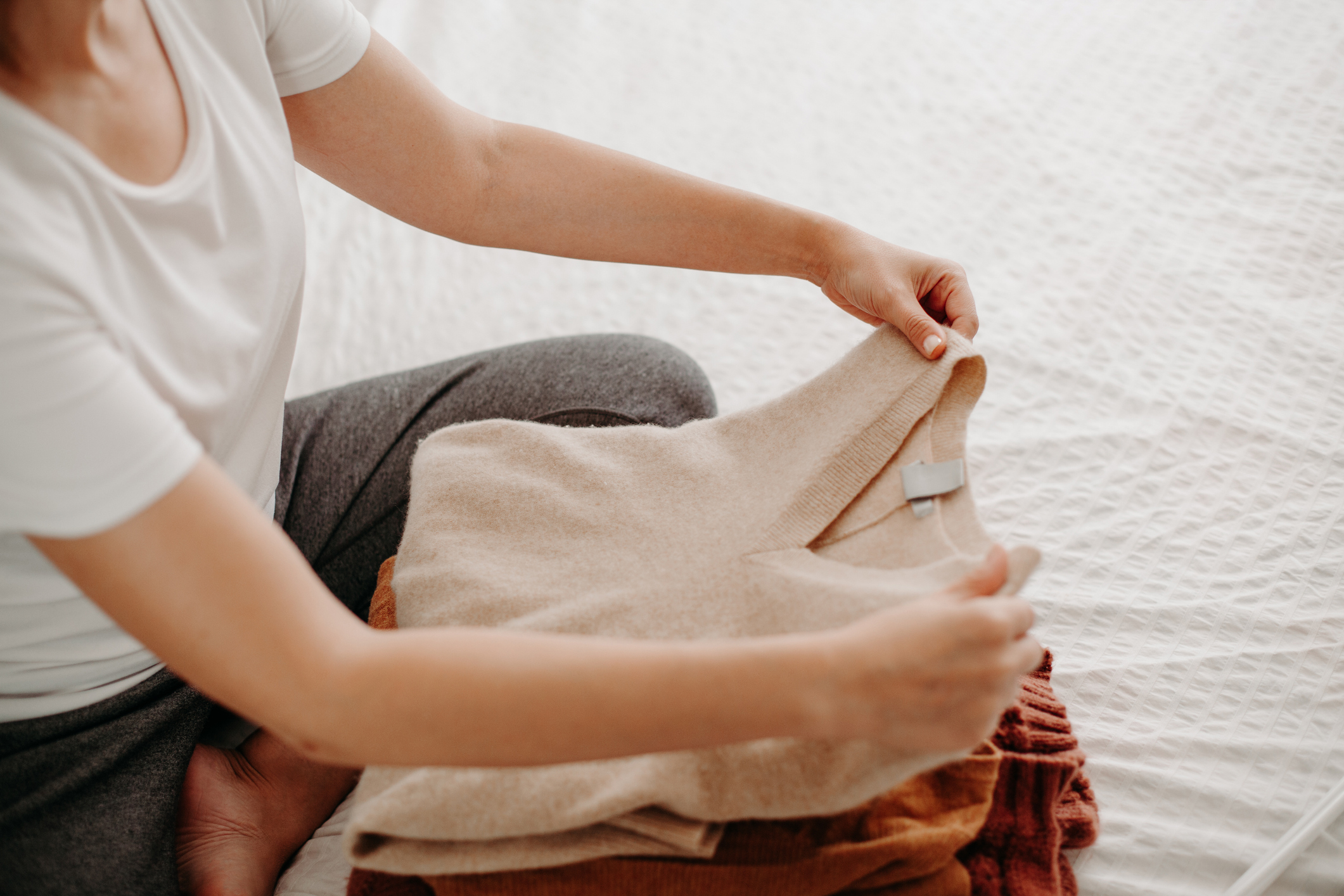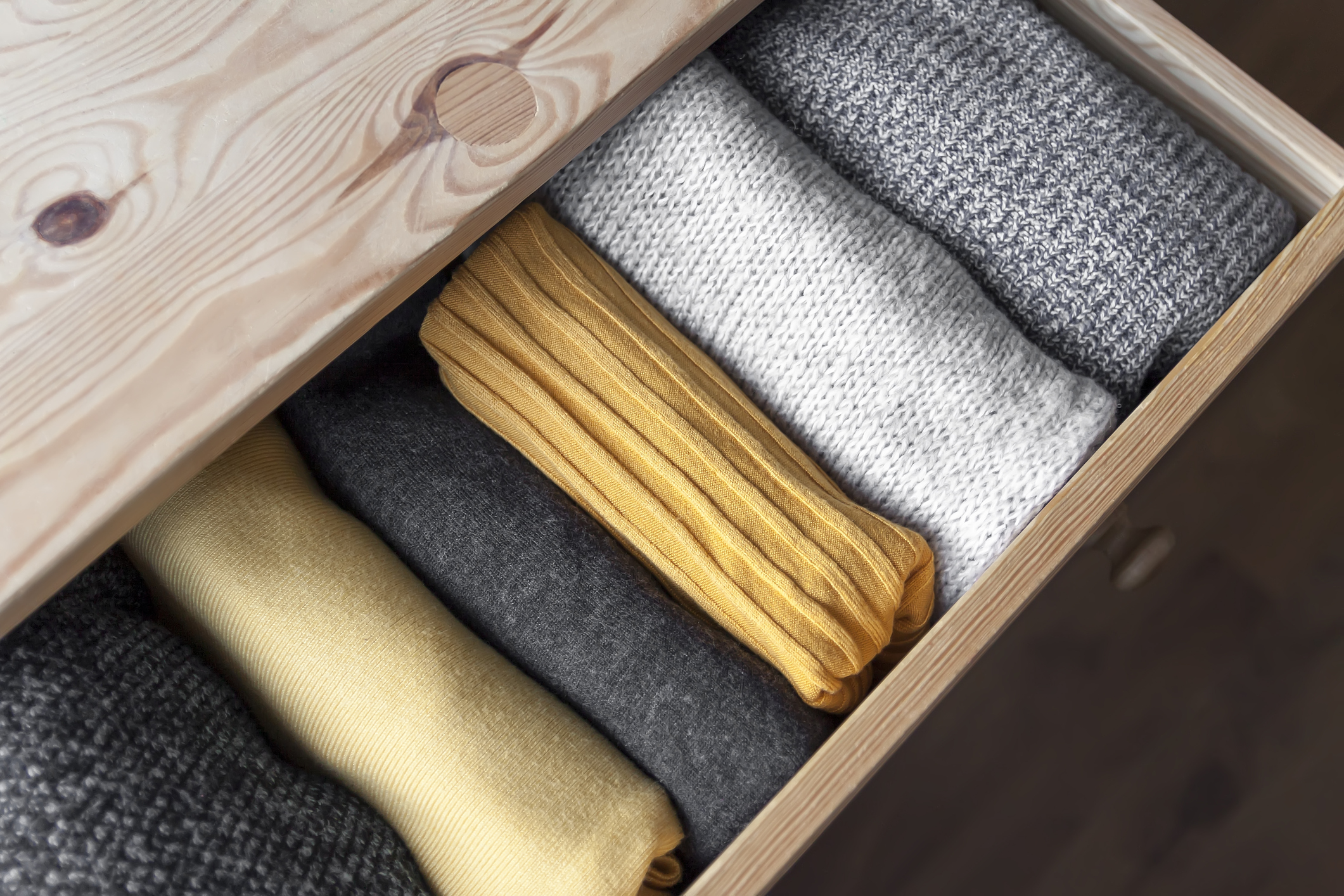There’s always a palpable excitement in the air once spring starts to near. The days are longer, temperatures are warmer, and far fewer layers are required to step outside. What’s less exciting is the seasonal closet swap. After a long and brutal winter, many people with average-sized closets are ready to toss their sweaters into storage even if the warm weather hasn’t caught up yet. If you’re one of these people, then this storage guide will be a lifesaver the next time spring rolls in.
Not all sweaters are created equal. Some are bulky, and others are thin. Some have tight-knit, and others are loosely woven. With so many types of sweaters, it’s difficult to give a one-size-fits-all recommendation on how to store sweaters, but proper storage and cleaning can extend the life of your garments. According to the Drycleaning Institute of Australia, sweaters (or jumpers as they call them Down Under) have an average life expectancy of three to four years.
Follow these basic guidelines to keep even the most expensive cashmere sweater looking and smelling like new for decades.
Related: How to Store Clothes for Future Use
The best way to store sweaters

Before you start storing sweaters in the off-season, consider decluttering your closet. There’s no sense in storing sweaters if you no longer plan to wear them! As a rule of thumb, get rid of any sweater that falls under the following categories:
- It no longer fits
- The sweater is permanently stained or damaged
- You haven’t worn the sweater in over a year
Did you try your best to Marie Kondo your sweater situation? Now you can move forward with some sweater storage ideas and know-how.
Is it better to fold or hang sweaters?
Most of us are told that hanging sweaters is a terrible idea. Why? Because in many cases, hanging a sweater long term can eventually cause the shoulders to stretch out irreversibly. However, another camp believes that folding sweaters isn’t ideal for space–saving since they can hang more sweaters in their closets than they can fit into drawers. Additionally, thinner sweaters also tend to get wrinkled when folded and left in a drawer.
So should you hang sweaters? Most storage experts agree that it’s better to fold a sweater to maintain its shape, especially when it’s hand-knit or prone to stretching. But if you’re short on shelf space and have a lot of hanging storage available, here are some tips to prevent unwanted stretching.
How to hang sweaters:
- If possible, do not hang sweaters made of delicate fabric like wool, cashmere, or angora.
- One way to hang a sweater so it doesn’t stretch is to fold the arms and hang the sweater on the bottom wire like you would a pair of pants.
- There are several sweater folding tutorials that explain how to hang a sweater using the arms as an anchor around the hanger’s hook. We’ve linked a video explaining this down below.

How to fold sweaters:
- Consider folding a sweater Konmari-style by creating a long rectangle shape that can stack vertically inside a drawer.
- Make all your folded sweaters the same size by neatly folding the arms straight across the back of the sweater. We’ve linked a video demonstrating this method below:

What type of hangers are best for sweaters?
If you have no choice but to hang your sweaters, using the right ones will help mitigate some potential stretching. The experts at All Hung Up recommend “thick, curved and sturdy” hangers to support the sweater’s weight.
How do I store sweaters safely?

Another important aspect of storing sweaters is the location you choose. Think dry and dark, so that means no basements or garages because the moisture in these locations can seep into the fabrics and is difficult to remove.
If you’re limited on storage options, there are some tricks you can try to minimize the amount of odor that will get to the sweater in a moist environment.
Offseason sweater storage tips:
- Launder, then dry completely. For expensive sweaters, consider getting them professionally dry-cleaned. Don’t skip this step, even if the sweater seems clean since trace amounts of body oils and dirt can translate into future stains and smells that are very difficult to remove.
- Pick a cool, dry location. If you must store it in a basement, place silica packets or another moisture absorber inside an airtight container.
- Keep sweaters in an airtight container temporarily. This storage method is especially important if you must store sweaters in a damp area for a few months. It’s typically better if the fabric can breathe in a more open container or shelf space since fabric that is unable to breathe is susceptible to mold, mildew, and unwanted odors.
- Sort sweaters by material and store like materials together. Don’t store wool or cashmere sweaters packed too tightly inside a container since that can compromise the fabric and promote moisture buildup.
- Protect your investment by keeping pests out. Cashmere and other fine materials are expensive but resilient enough to last many years with the proper care. Invest in natural solutions to reduce moths, like cedar chips or lavender soap.
Should you store sweaters in plastic bags?
Never store sweaters in plastic bags. The material will prevent the fabric from getting air and potentially trap moisture and mildew.
Where should I store sweaters for the summer?
If you can carve out space in your closet or dresser for your sweaters, that’s great. Remember, an ideal storage location is out of direct sunlight, and room temperature or cooler.
Before storing sweaters in a basement, garage, or attic, consider the following creative sweater storage ideas:
- Does your home have tall ceilings? Place sweaters on a closet shelf that’s installed close to the ceiling.
- See if there’s a climate-controlled area of your home that is underutilized (i.e. in totes underneath the bed or in an interior mudroom cabinet.
How do I eliminate unwanted smells from sweaters?

If, in fact, you stored some sweaters without reading this advice, you might have some smelly garments on your hands. If a sweater has absorbed odors from your basement or attic, there are a few things you can do to try and correct the problem.
Ways to get rid of unwanted odors:
- Wash and dry the offending knits according to the manufacturer’s instructions, then spray with a Febreze or Lysol spray.
- After laundering, hang the sweaters out to dry on a sunny, dry day. The sunlight will work as a natural deodorizer.
- Make a DIY odor absorber. Take a mason jar and add baking soda and some drops of your favorite essential oil. Poke holes in the lid and place this inside a small, airtight container with the sweater. For added odor absorption, toss in a few dryer sheets as well.
- Hand-wash your garments in a mixture of baking soda, vinegar, and water.
- Throw the sweaters in the dryer on a low heat setting with some scented dryer balls.
Related: How to Keep Mice and Bugs Out of a Storage Unit
You’re now ready to put your sweaters into storage. If you have other tips and tricks for safely storing off-season clothes, please share them with us on social media @lifestorage.
Updated 6/26/23 from a post originally published 4/3/19.







